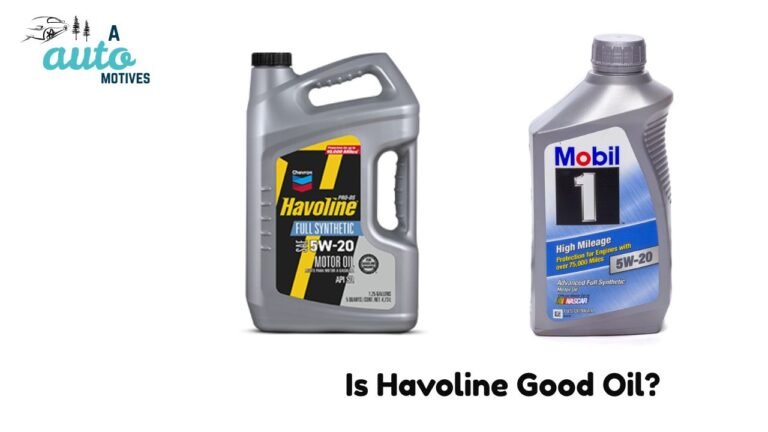What Oil Is Needed for My Car? A Friendly, Complete Guide

If you’ve ever popped your car’s hood and stared at the engine, wondering “what oil is needed for my car?”, you’re not alone. This simple question has confused so many drivers—especially new ones. When I bought my first car, I thought any oil would do. I picked one off the shelf and hoped for the best. But it turns out choosing the right oil is like picking the right blood type—it really matters.
Motor oil keeps your engine alive. It lubricates, cools, cleans, and protects the engine’s parts. If you pick the wrong type, it could lead to engine wear or even damage. But don’t worry. You don’t have to be a mechanic to get it right. In this guide, I’ll help you understand oil types, how to read oil labels, and how to figure out what your car needs. It’s easier than you think, and I’ll break it down like a good friend would.
Why Motor Oil Matters More Than You Think
Motor oil isn’t just thick goop you pour into your engine. It’s the invisible hero of every car journey. Just like your body needs water to survive, your engine needs oil to keep moving parts working smoothly.
Here’s what engine oil actually does:
-
Lubricates: Reduces friction between metal parts.
-
Cools: Transfers heat away from hot engine areas.
-
Cleans: Removes dirt and particles through the oil filter.
-
Protects: Forms a protective layer against corrosion and wear.
If you’ve ever skipped an oil change, you might’ve noticed your car sounding louder or running rough. That’s your engine crying out for help.
Using the wrong oil can cause:
-
Poor fuel economy
-
Reduced engine lifespan
-
Difficulty starting in cold weather
-
Overheating in summer
So, when someone asks, what oil is needed for my car, the answer can literally mean the difference between smooth driving and a costly repair bill.
Understanding Oil Types: Conventional vs Synthetic vs Blends
Let’s break it down in simple terms.
1. Conventional Oil
This is old-school oil, refined from crude. It’s usually the cheapest and works fine for older engines or drivers who don’t push their cars too hard.
Best for:
-
Older vehicles
-
Drivers with low mileage needs
2. Synthetic Oil
Made in labs, it’s cleaner, more consistent, and lasts longer. It performs better in extreme heat or cold.
Best for:
-
Newer cars
-
High-performance or turbocharged engines
-
Drivers with long commutes or extreme weather
3. Synthetic Blend
A mix of both worlds. More affordable than full synthetic but offers better performance than conventional.
Best for:
-
Drivers on a budget who still want better protection
Quick Comparison Table: Oil Types
| Oil Type | Performance | Price | Ideal For |
|---|---|---|---|
| Conventional | Low | Low | Older cars, short trips |
| Synthetic Blend | Medium | Medium | Daily drivers, mixed usage |
| Full Synthetic | High | Higher | New cars, long trips, extreme temps |
Decoding Viscosity Grades: What Does 5W-30 Mean?
Ever seen something like “5W-30” on an oil bottle and thought it was code for a robot language? Let’s decode that mystery.
-
“5W” stands for winter performance. The lower the number, the better it flows in cold.
-
“30” is how thick the oil is at high temperatures.
So, 5W-30 means:
-
It flows easily in cold weather (important for starting).
-
It stays thick enough to protect your engine at high heat.
Here’s a metaphor: Imagine oil as honey. In winter, you want honey that pours easily. In summer, you want it thick enough not to run off your toast.
Common Viscosity Grades and Their Meaning
| Grade | Cold Temp Start | Hot Temp Protection | Common Use |
|---|---|---|---|
| 0W-20 | Excellent | Good | Newer cars, hybrids |
| 5W-30 | Very Good | Very Good | Most petrol and diesel engines |
| 10W-40 | Good | Better | Older engines, warmer climates |
When wondering what oil is needed for my car, checking your owner’s manual or oil cap can give you this info instantly.
How to Find the Right Oil for Your Car: 3 Easy Ways
Here’s the good news: you don’t need to be a pro. Here’s how to check:
1. Look in Your Owner’s Manual
This is the car’s rulebook. The manufacturer knows best and lists the exact oil your engine needs.
2. Check the Oil Cap
Open your bonnet and look at the oil cap. It often says something like “5W-30” or “0W-20.”
3. Use an Online Oil Selector
Websites like Castrol, Mobil, or Valvoline have tools. Just type in your car make, model, and year.
Here’s a quick tip: Never guess. Using the wrong oil can harm your engine, especially in newer models with tight tolerances.
Real Talk: How I Messed Up and What I Learned
I once used 10W-40 in my car when the manual said 5W-30. I thought it wouldn’t matter. A week later, the engine struggled to start during a chilly morning. It sounded rough—like an old diesel truck trying to sing opera.
After switching to the recommended oil, the engine purred. Smoother drives. Better mileage. That mistake taught me to respect the tiny numbers on the bottle.
So, the next time someone asks what oil is needed for my car, I tell them—don’t wing it. Follow the specs like you would a doctor’s prescription.
How Often Should You Change Your Oil?
This depends on the oil type, your driving style, and your car model.
Here’s a general guide:
-
Conventional Oil: Every 3,000 to 5,000 miles
-
Synthetic Blend: Every 5,000 to 7,500 miles
-
Full Synthetic: Up to 10,000 or even 15,000 miles
But remember—always follow the service schedule in your manual. And listen to your car. If it runs louder or accelerates sluggishly, it might be oil time.
Signs You’re Using the Wrong Oil
Sometimes your car tells you something’s off—subtly.
Watch out for:
-
Engine knocking or ticking
-
Blue smoke from exhaust
-
Decreased fuel economy
-
Trouble starting in cold weather
-
Warning lights on the dash
Your engine’s voice is subtle, but real. Listen to it.
Seasonal Oil Changes: Should You Switch Oils in Summer or Winter?
One of the most common questions people ask is whether they need to switch oil depending on the season. And the answer is—it depends.
In cold climates, using low-viscosity oil like 0W-20 or 5W-30 helps your engine start more easily. The “W” in 5W stands for winter, and oils with a lower “W” number flow better when it’s cold.
In hot summer weather, especially if you’re towing or doing a lot of uphill driving, thicker oil like 10W-40 might offer better protection.
Here’s a seasonal breakdown:
| Season | Recommended Viscosity | Notes |
|---|---|---|
| Winter | 0W-20 or 5W-30 | Flows better in the cold |
| Summer | 5W-30 or 10W-40 | Holds up better in heat |
| Tropical Climates | 10W-40 or 15W-50 | Consistent protection under high heat |
If your car manual suggests 5W-30 year-round, then seasonal switching isn’t necessary. Modern oils are versatile, but older cars may benefit from switching grades.
High-Mileage Oils: Are They Worth It?
If your car has clocked over 75,000 miles, you might’ve seen bottles labeled “high mileage oil.” These are not a gimmick. They’re made with seal conditioners and extra detergents to prevent leaks and reduce engine wear.
I used high-mileage synthetic oil in my dad’s 2004 Honda after it started leaking a little. After just two oil changes, the leak had almost stopped. The engine ran smoother, too. These oils are like joint supplements for older engines.
Key Benefits of High-Mileage Oil:
-
Helps reduce leaks and oil burn
-
Protects aging engine parts
-
Cleans built-up sludge gently
So when you’re thinking, what oil is needed for my car, if it’s an older model, high mileage oil might be the smart choice.
Common Oil Myths Debunked
There’s a lot of bad advice out there. Let’s set the record straight:
Myth 1: You need to change oil every 3,000 miles.
Not true for modern engines and synthetic oils. Many cars go 7,500 or 10,000 miles safely. Follow your manual—not old rules.
Myth 2: Dark oil = bad oil.
Oil turns dark as it cleans your engine. That’s a sign it’s doing its job. Color alone doesn’t mean it’s time for a change.
Myth 3: You can’t switch to synthetic oil.
Totally false. Even older cars can switch—just make sure seals are in good shape.
Myth 4: All oils are the same.
They aren’t. Even two bottles labeled 5W-30 can differ in additives, brand quality, and durability. Stick to known brands and follow your car’s specs.
Trusted Oil Brands You Can Count On
Brand does matter. Stick with quality. These brands are known for producing reliable oils:
-
Castrol – Known for high-quality synthetic oils
-
Mobil 1 – Widely recommended by automakers
-
Valvoline – Great for high-mileage and conventional options
-
Shell Helix – Trusted in both performance and economy cars
-
Total Quartz – Common in European and luxury vehicles
When choosing oil, don’t just ask what oil is needed for my car—ask who makes the oil and what’s inside it.
DIY vs. Professional Oil Change: Which One’s Better?
If you’re handy, doing it yourself can save money and give you peace of mind. I love the satisfaction of finishing an oil change on a Sunday afternoon with some music playing. But it can be messy.
DIY Pros:
-
Save money
-
Know exactly what oil you’re using
-
Convenient if you’re already comfortable with tools
DIY Cons:
-
Risk of spills
-
Requires tools, ramps, and safe disposal of old oil
-
Not ideal in cold weather or tight parking spaces
Pro Shop Pros:
-
Fast and clean
-
They handle waste oil properly
-
Free checks (like tire pressure and filters)
Pro Shop Cons:
-
Can be pricier
-
You may not always know what oil they use unless you ask
Either way, the key thing is making sure the correct oil is used. Whether you DIY or go to a garage, ask for the exact grade your car requires.
Final Checklist: Choosing the Right Oil for Your Car
Here’s a quick list to help you every time you’re asking yourself: what oil is needed for my car?
- Check the owner’s manual
- Look at the oil cap under your hood
- Know the viscosity grade (like 5W-30)
- Consider the climate and season
- Factor in your car’s mileage and age
- Choose quality brands with the right certifications
- Match oil type to driving style (synthetic vs blend vs conventional)
FAQs: Quick Answers to Common Oil Questions
1. Can I mix different oils?
It’s not ideal, but if you’re stuck, yes. Just don’t make it a habit. Always top off with the same grade if possible.
2. Can I use synthetic oil in an old car?
Yes! But check if your seals are in good shape. Synthetic oil can clean out gunk, which might cause leaks in older engines.
3. Is more expensive oil better?
Usually, yes—but only if it fits your car’s needs. Don’t use racing oil in your family hatchback.
4. What if I put in the wrong viscosity?
Short term? You’ll survive. Long term? It can damage engine parts or cause poor fuel economy.
5. How do I know when to change my oil?
Check the dipstick. If it’s black and dirty, it’s time. Or follow your dashboard reminder.
Conclusion: Don’t Just Pour—Pour With Purpose
Choosing the right oil doesn’t need to be scary or confusing. When someone asks you, “what oil is needed for my car?”, you can now say with confidence, “Let me show you how to find out.”
It’s not just about keeping the engine running—it’s about giving your car the best care possible. Whether you’re heading out on a weekend road trip or just commuting to work, having the right engine oil means you’re protecting your investment and enjoying the ride.
So the next time you lift that hood, do it with knowledge, care, and confidence. Your car will thank you—with every smooth mile.






